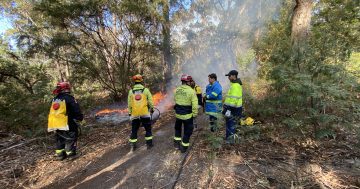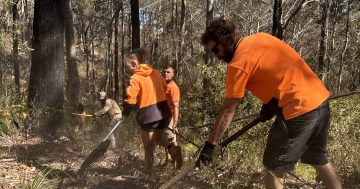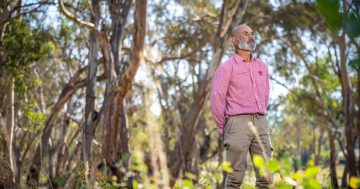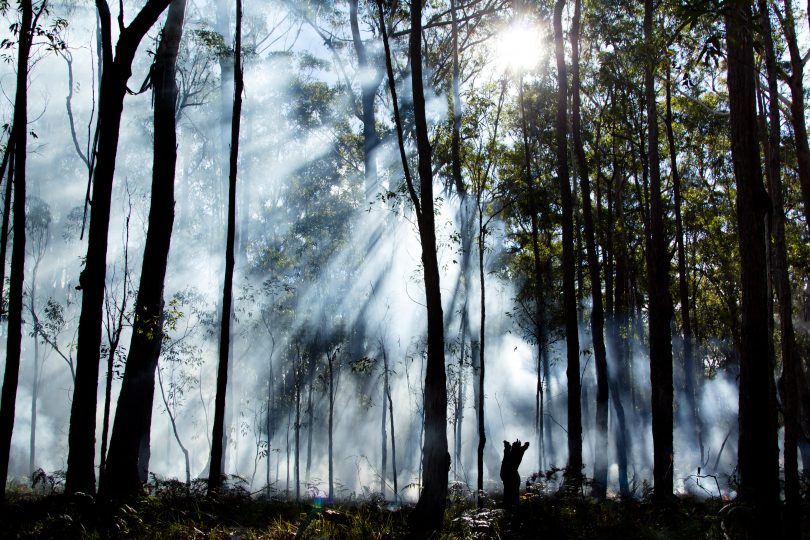
Photo: Warren Purnell.
When I think about it, it makes so much sense.
Indigenous Australians have walked on this land for thousands of years … barefoot. The bush around the far south coast, where I live, is a challenge to walk through, even in heavy boots.
How did the owners of this land traverse the thick leaf litter, sharp sticks, piles of fallen trees and stacked logs?
How did they navigate concealed hazards, like a dozing red-belly black snake? How could they see through the thick bush, to find food and medicine, to see where the tribe went?
“The bush was never like it is now,” says Pete Dixon, crew leader at Bega Local Aboriginal Land Council. “There are different types of bush but you should be able to run through it in bare feet and not hurt yourself.”
The bush is considered sick by Indigenous fire practitioners and, as we’ve recently learnt firsthand, it’s a tinderbox.
Pete, who says he was disconnected from culture in his youth, has been working with the Land Council for 10 years, learning about how to care for the land with fire from his elders.
His learning has been backed, on and off, by government funding to the Land Council, which in 2017 provided RFS training to him and eight others and allowed the crew to begin doing cultural burning on land they own.
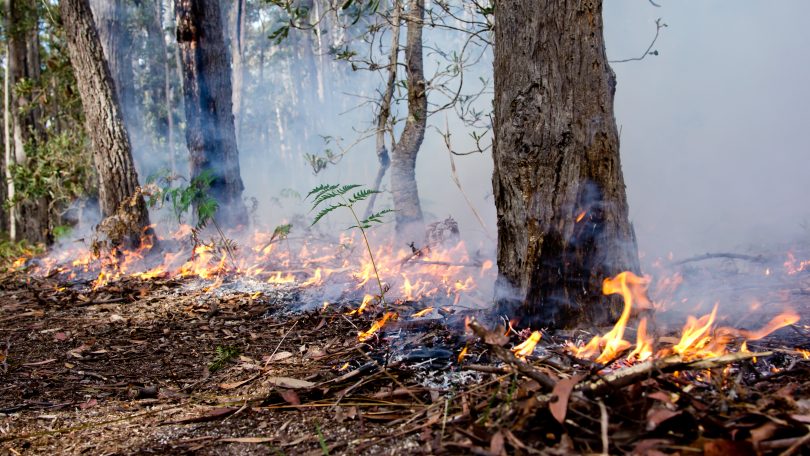
Photo: Warren Purnell.
“The first burn is the re-set burn, it’s hard to keep that one cool,” Pete explains. “You’ll see dark blue smoke and a thick layer of white ash, indicating a hot fire.”
After the initial burn, which whips through potentially decades of built-up organic matter, a mosaic of regular cultural burning can begin in earnest.
A lot of prep work is done first. The crew clears around big trees and logs so they have bare dirt for a metre around them so that animals have cool places to hide after the fire.
“Everything we do is something for the environment. Potaroos are endangered but if we could clear up the bush so it’s nice, grassy woodland, they’d come back.”
There should be more animals living in the bush, according to Pete. So where are they?
“They’re on the golf courses and roadsides because that’s where the grass is,” says Land Council CEO Glenn Wilcox dryly.
A good burn is one you can stand right beside, Pete says.
“After the fire goes through, you should be able to pull back the ash and put your hand right on the soil.”
This in contrast to stories from residents around Quaama and Cobargo, who said they could feel the heat from the Baja Forest Fire when it was still 20 km away.
Indigenous fire practitioners up and down our coast have been trying to get permission to burn the forests – to clean the forest, fix the forests –- for decades and we haven’t listened.
Glenn has been with the Land Council for five years and fighting for funding for his keen fire crew has been constant.
“We’ve been working with the government and had promises of funding which didn’t come to fruition. When you’ve got a trained crew and you don’t have work for them, they’re going to disappear.”
So Glenn, Pete and the Land Council team have taken matters into their own hands, launching a public fundraising site to raise funds for training, wages, operating costs and equipment so that 2020 can be the year of the cultural burn on the Far South Coast.
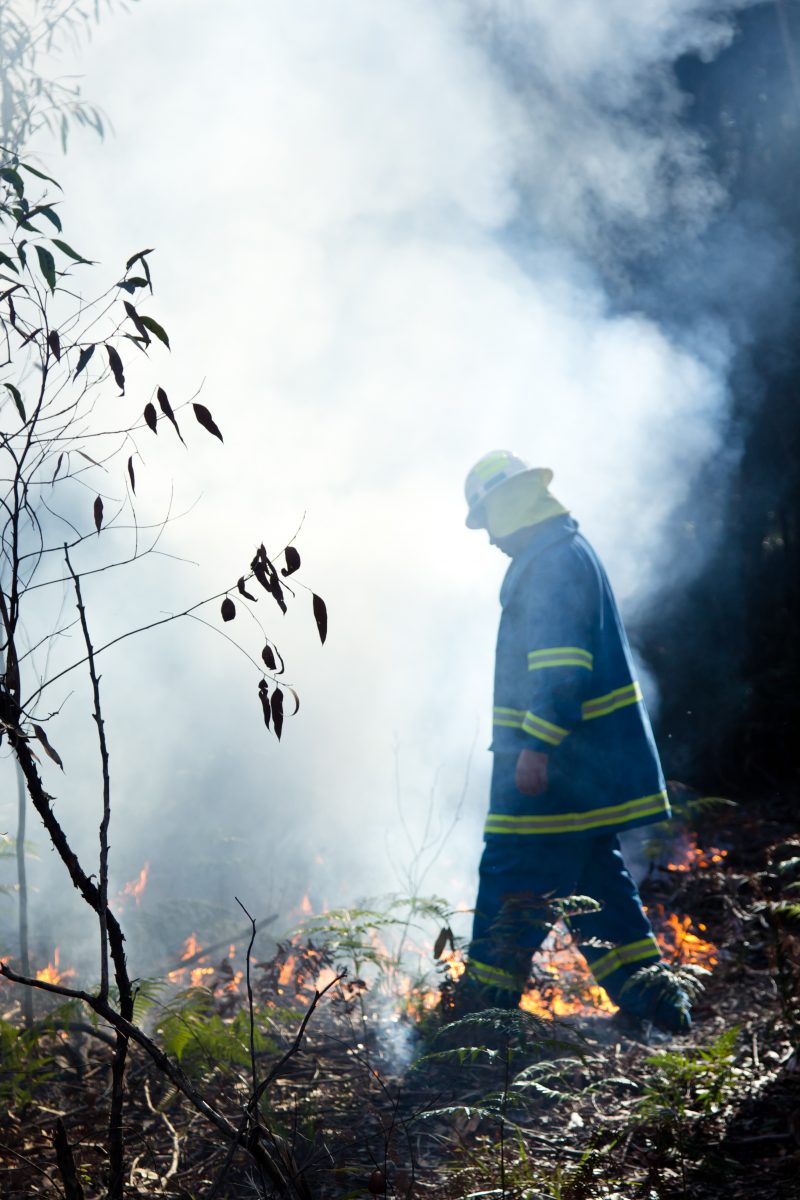
Pete Dixon on a cultural burn last year. Photo: Warren Purnell.
“A lot of people have said that the burning we did behind Tathra helped when the fire came through,” Pete says. “With the current fire situation, I think people are ready to hear it now.”
The Land Council has strategic landholdings that adjoin villages and localities in the Bega Valley region including Tathra, Merimbula, Tura Beach, Bega, Wallagoot, Tanja, Bemboka and Turingal.
If they can begin burning these areas this year, it may just save houses and towns next year.
“Because of climate change, the window when we can burn is closing in,” Glenn comments, “so it becomes more important to do it when we can.”
As well as improving ecosystems and potentially saving houses from fire, funding the cultural burn program keeps Pete and other local Koori community employed doing something they enjoy.
Something important, useful and culturally meaningful.
“Being back on land, it’s a homing feeling, calming, like it’s meant to be,” Pete shares. “Fire is part of our culture, it was always following us. It shouldn’t be something we’re afraid of.”
To donate, visit https://www.gofundme.com/f/bega-lalc-cultural-burning-program.
For more information, visit Firesticks Alliance.






